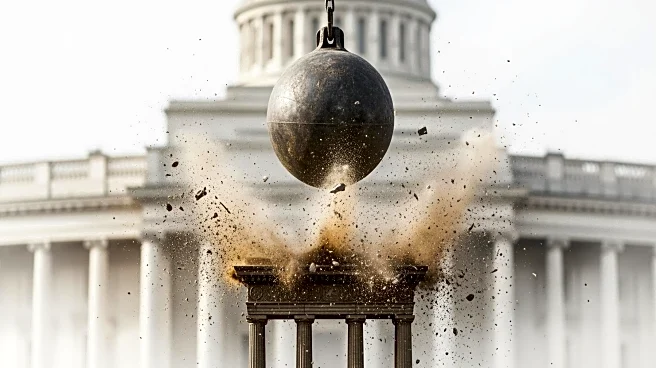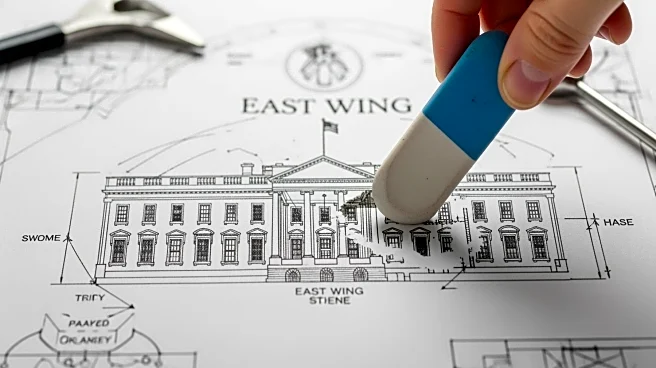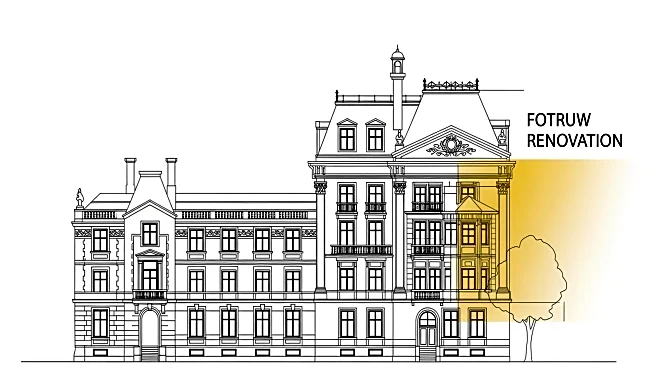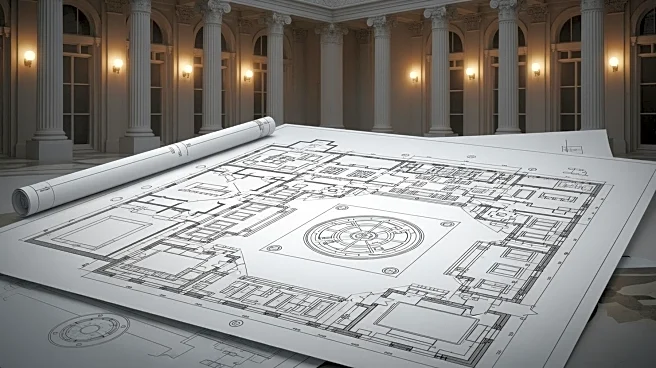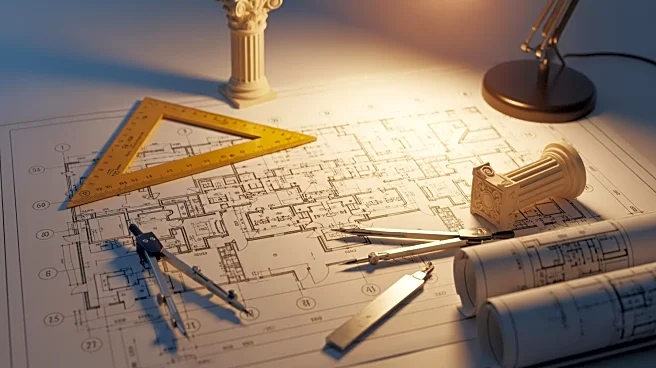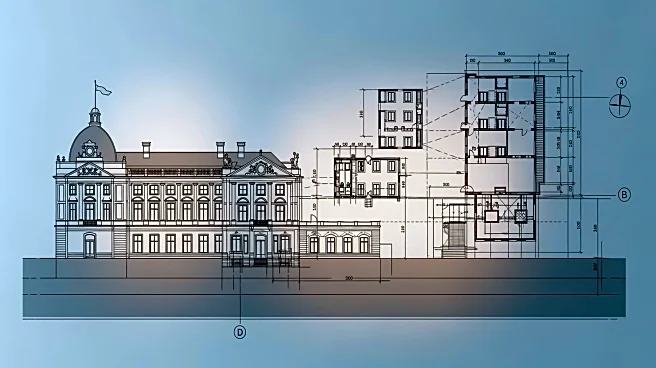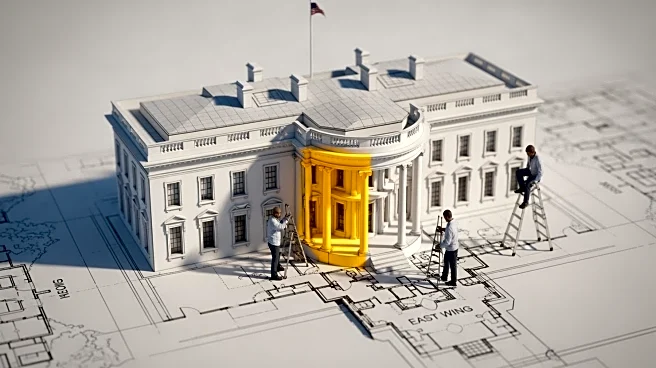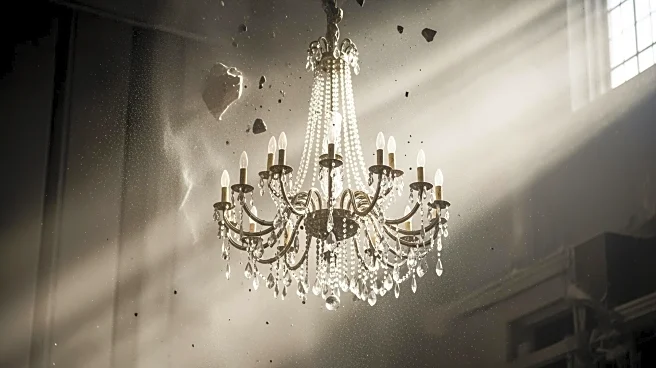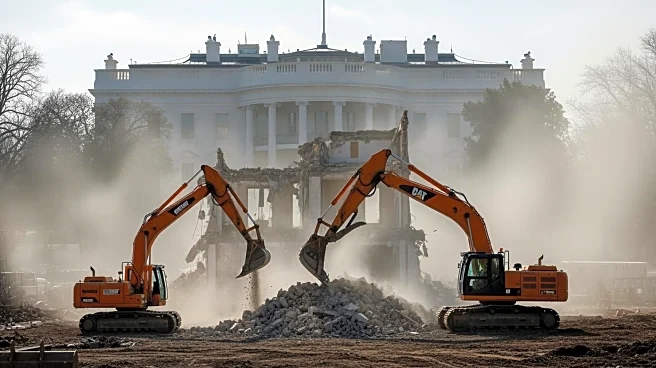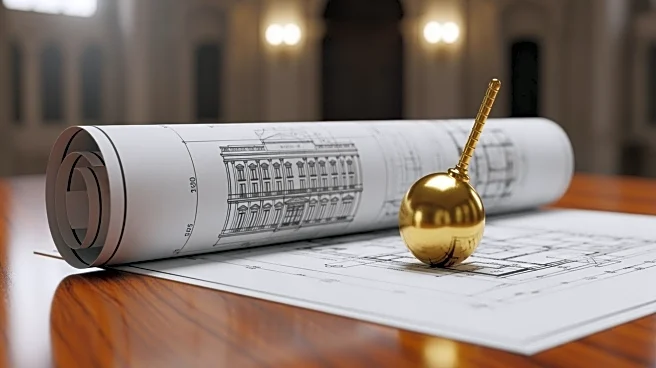What's Happening?
Demolition crews have continued the process of tearing down part of the White House East Wing as of October 22, 2025. This demolition is part of President Donald Trump's long-planned project to construct
a new ballroom within the White House premises. The initiative marks a significant alteration to the historic building, aiming to enhance its facilities for hosting events. The project has been in the planning stages for some time, reflecting President Trump's vision for modernizing certain aspects of the White House to better accommodate large gatherings and official functions.
Why It's Important?
The construction of a new ballroom in the White House represents a notable shift in how the presidential residence is utilized for official events. This development could impact the way diplomatic and political functions are conducted, potentially increasing the capacity for hosting international leaders and large-scale events. The renovation may also influence public perception of the presidency, as it reflects President Trump's personal style and priorities. Additionally, the project could have implications for historical preservation debates, as changes to the White House often spark discussions about maintaining the integrity of national landmarks.
What's Next?
As the demolition progresses, further construction phases are expected to follow, leading to the eventual completion of the ballroom. Stakeholders, including historical preservationists and political commentators, may continue to monitor the project closely, assessing its impact on the White House's historical architecture. The completion of the ballroom could lead to a series of inaugural events, showcasing the new space and its capabilities. Additionally, reactions from the public and political figures may vary, with some supporting the modernization efforts and others expressing concern over alterations to the historic site.
Beyond the Headlines
The decision to construct a ballroom in the White House may reflect broader cultural and political trends, such as the emphasis on hosting and diplomacy in contemporary governance. It also raises questions about the balance between modernization and preservation in national landmarks. The project could set a precedent for future administrations regarding how they choose to adapt the White House to meet evolving needs and preferences.
